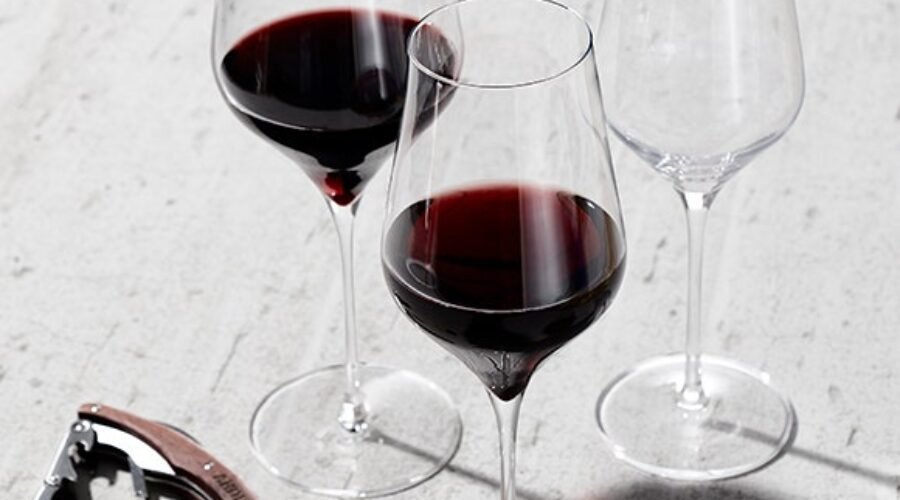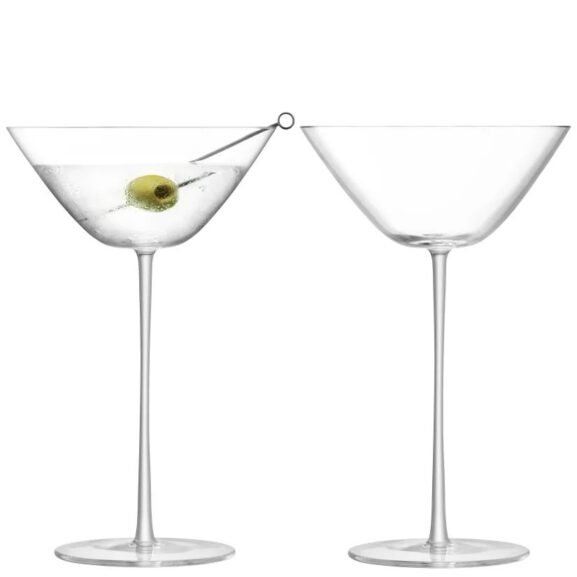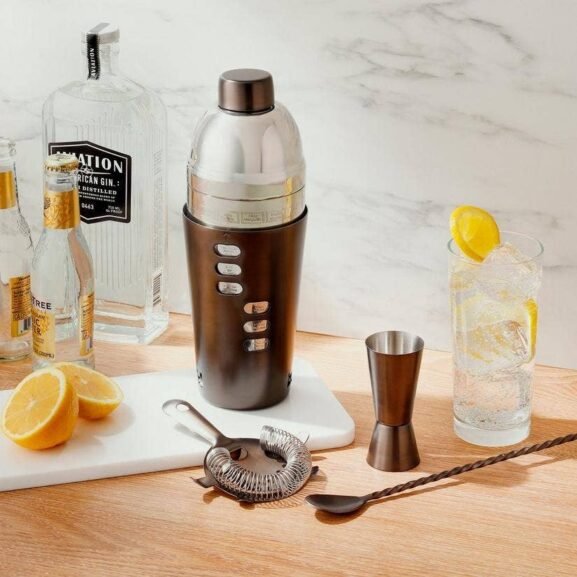When It’s OK to Send Wine Back (and When it’s Not)
I was recently having dinner at a boutique resort in Costa Rica when I heard a glass break across the room. A diner who had been animatedly gesturing to her companion accidentally knocked it over, spilling the wine and breaking the stemware. When the manager quickly arrived to make sure the two were okay, the woman’s first reaction was to ask if it could be removed from the bill. I was stunned that she felt entitled to a freebie, given that spilling it—and shattering the glass to boot—was her fault.
While this might be an extreme example, it got me thinking about the etiquette surrounding sending back wine. When is it acceptable, and when is it a question of preference, entitlement or bad behavior?
Case 1: It’s Not You—It’s the Bottle
The most clear-cut situation happens when a wine is unpalatable due to improper storage, poor winemaking or an inherent fault. “It’s completely acceptable to send back a wine if it’s truly flawed,” says Chad Michael George, certified sommelier, founder of Proof Productions and general manager at Bars.com. “Meaning it has been baked or overheated, is tainted with TCA [aka cork taint] or has gone bad in some other way, like being exposed to oxidation.”
It’s estimated that 3 to 5% of wines packaged with corks are affected with TCA, which is formed when fungi, mold or certain bacteria come in contact with tree bark. Humans are incredibly sensitive to this compound, with the ability to perceive as little as less than one part per trillion. So, if you’ve ever ordered wine and thought that it tasted like a wet basement, moldy, musty or just “off,” it could have been affected by TCA. In this instance, you have every right to ask for a different bottle.
However, TCA is only one potential fault, and current winemaking trends make it more challenging to identify a flawed bottle, according to George. “There are a lot of funky wines out there, especially with the growth of natural wines and low/no intervention winemakers.”
// Create the element
var script_687ea093bd08a = document.createElement(“script”);
script_687ea093bd08a.innerHTML = `
window.googletag = window.googletag || {cmd: []};
googletag.cmd.push(function() {
var adType = “leaderboard”;
var mapping;
var lbmapping = googletag.sizeMapping()
.addSize([1024, 0], [[970, 250], [970, 90], [1, 1], [728, 90]])
.addSize([728, 0], [[728, 90], [1, 1]])
.addSize([320, 0], [[1, 1], [300, 50], [300, 100], [320, 50], [320, 100]])
.addSize([0, 0], [[1, 1], [320, 50]])
.build();; // Size mapping for leaderboard ads
var medrecmapping = googletag.sizeMapping()
.addSize([1024, 0], [[300, 600],[300, 250]])
.addSize([728, 0], [300, 250])
.addSize([320, 0], [[1, 1],[300, 250]])
.addSize([0, 0], [[1, 1], [300, 250]])
.build(); // Size mapping for med rectengle ads
if(‘/39808611/article_page/article_leaderboard_1’ == ‘/39808611/article_page/article_leaderboard_1’
|| ‘/39808611/article_page/article_leaderboard_1’ == ‘/39808611/article_page/article_leaderboard_2’
|| ‘/39808611/article_page/article_leaderboard_1’ == ‘/39808611/article_page/article_leaderboard_3’) {
mapping = googletag.sizeMapping()
.addSize([1920, 0], [[728, 90]]) // >= 1920px
.addSize([1440, 0], [[728, 90]]) // 1440px-1919px
.addSize([730, 0], [[300, 250]]) // 730px-1439px
.addSize([0, 0], [[320, 100], [320, 50], [300, 100], [300, 50], [300, 250]]) // Up to 729px
.build();
} else {
mapping = adType == ‘leaderboard’ ? lbmapping : medrecmapping;
}
googletag.defineSlot(‘/39808611/article_page/article_leaderboard_1’, [],
‘div-gpt-ad-687ea093bd08a’).addService(googletag.pubads()).defineSizeMapping(mapping);
googletag.pubads().enableSingleRequest();
googletag.pubads().collapseEmptyDivs();
googletag.display(‘div-gpt-ad-687ea093bd08a’);
});
`;
// Append the script to the body
document.body.appendChild(script_687ea093bd08a);
Brettanomyces, or “brett,” for example, is a type of yeast that at lower thresholds can add complex, interesting leather and barnyard aromas; at higher levels, though, it can be off-putting or make a wine undrinkable.
So, what can you do if you’re sitting there swirling, sniffing and scratching your head as to whether the wine needs to be dumped, or if you’re being duped by your wine knowledge (or lack thereof?). “Ask the sommelier or manager to try it,” says Anthony Taylor, wine director at Cru Uncorked in Moreland Hills, Ohio. “An establishment with a solid wine program will have staff trained in wine flaws and how to spot them.”
He recalls a situation where he opened and poured a wine that the guest approved. Smelling the cork on the way back to the cellar, he was hit with a massive wave of cork taint. He immediately grabbed another bottle and fresh glasses, returned to the table and, with the guests’ permission, did a side-by-side comparison to educate, not embarrass. Had he not noticed, though, the table would have been left to grin, sip and bear it all evening.
Case 2: You Ordered It, But Now You Regret It
Faulted wines are one thing, but what if what your order just isn’t your cup of tea? Well, that’s more of a grey area. Guests unfamiliar with the nuances of the effects of bottle age, for example, may unfairly judge a mature bottle, especially if they’re unaccustomed to the secondary and tertiary aromas and flavors that can develop over time. “If the wine is particular, or older in style, we do our due diligence to explain to the guest what it will be like before we open it,” says Hugo Bensimon, beverage director at Grill 23 & Bar in Boston. An aged Pinot Noir will pick up savory notes of mushroom and forest floor, which could be vastly different from the juicy red cherry and raspberry you were expecting.
If a guest selects blindly from the list, or doubles-down after the sommelier has explained that the Riesling they’ve requested won’t be bone dry or the natural wine may be overtly expressive, and then isn’t a fan of what’s poured into their glass, it amounts to buyer beware, according to Genaro Gallo. “These aren’t flaws—they’re stylistic qualities,” says the advanced sommelier at The Lodge at Dawn Ranch in Guerneville, California. “Wine is not like food; ordering something and not liking it doesn’t necessarily make it returnable.”
In other words, you may be stuck with it.
// Create the element
var script_687ea093bd79c = document.createElement(“script”);
script_687ea093bd79c.innerHTML = `
window.googletag = window.googletag || {cmd: []};
googletag.cmd.push(function() {
var adType = “leaderboard”;
var mapping;
var lbmapping = googletag.sizeMapping()
.addSize([1024, 0], [[970, 250], [970, 90], [1, 1], [728, 90]])
.addSize([728, 0], [[728, 90], [1, 1]])
.addSize([320, 0], [[1, 1], [300, 50], [300, 100], [320, 50], [320, 100]])
.addSize([0, 0], [[1, 1], [320, 50]])
.build();; // Size mapping for leaderboard ads
var medrecmapping = googletag.sizeMapping()
.addSize([1024, 0], [[300, 600],[300, 250]])
.addSize([728, 0], [300, 250])
.addSize([320, 0], [[1, 1],[300, 250]])
.addSize([0, 0], [[1, 1], [300, 250]])
.build(); // Size mapping for med rectengle ads
if(‘/39808611/article_page/article_leaderboard_2’ == ‘/39808611/article_page/article_leaderboard_1’
|| ‘/39808611/article_page/article_leaderboard_2’ == ‘/39808611/article_page/article_leaderboard_2’
|| ‘/39808611/article_page/article_leaderboard_2’ == ‘/39808611/article_page/article_leaderboard_3’) {
mapping = googletag.sizeMapping()
.addSize([1920, 0], [[728, 90]]) // >= 1920px
.addSize([1440, 0], [[728, 90]]) // 1440px-1919px
.addSize([730, 0], [[300, 250]]) // 730px-1439px
.addSize([0, 0], [[320, 100], [320, 50], [300, 100], [300, 50], [300, 250]]) // Up to 729px
.build();
} else {
mapping = adType == ‘leaderboard’ ? lbmapping : medrecmapping;
}
googletag.defineSlot(‘/39808611/article_page/article_leaderboard_2’, [],
‘div-gpt-ad-687ea093bd79c’).addService(googletag.pubads()).defineSizeMapping(mapping);
googletag.pubads().enableSingleRequest();
googletag.pubads().collapseEmptyDivs();
googletag.display(‘div-gpt-ad-687ea093bd79c’);
});
`;
// Append the script to the body
document.body.appendChild(script_687ea093bd79c);
However, while it’s not something to expect or count on, some restaurants will honor requests to send back a wine that’s not your jam. Gallo cites a guest who returned a high-end Barolo after two glasses, deeming it “wasn’t what they imagined.”
“It was in perfect condition, just too structured for their taste,” he says. He went on to offer them a different bottle and offered the Barolo by the glass at the bar—selling out in under an hour.
George had a similar scenario with a bottle of 1982 Château Ducru Beaucaillou, listed for $800, which the guest erroneously declared had oxidized. “Even if I were in the business of telling a guest they were wrong, he wouldn’t have accepted the answer.”
He removed the bottle, sold two glasses at the bar for $125 each and poured the remainder for staff at the end of the night. Again, proactively having a conversation with the sommelier about the wines before you make a selection can help manage expectations and stave off disappointment.
Decide Early, Be Considerate
If you’re not pleased, don’t wait until there’s barely a drop left. “If the guest has finished or almost finished the bottle and then complains, management needs to intervene and address the situation accordingly,” says Yumilka “Yumi” Ortiz, a sommelier, wine educator and traveling winemaker. While some restaurants will take it back, she points out that not every restaurant has the budget or inventory to regularly swallow the loss of wine rejected based on likeability.
One way to mitigate that scenario is to sample a pour before going all in. “It’s much easier for us to replace a glass of wine than a bottle,” Bensimon admits. “We offer tastes, so if you’re cautious about your selection that’s generally the safest way to make sure you know what you’re getting.”
But there’s a caveat here, too. “Tasting wines by the glass is a courteous gesture; it shouldn’t be taken advantage of,” says Ortiz. Asking a sommelier in a busy dining room or wine bar for more than two tastes is inconsiderate and akin to trying to make a meal from grocery store prepared food samples.
In the end, Gallo says, barring obvious quality issues, whether you have a legitimate right to send back a wine comes down to judgment, experience and hospitality. “Ultimately we want our guests to feel taken care of, but we also need to be realistic and fair.”
More Etiquette Coverage
- Nail your next tasting room visit with these winemaker-approved tips.
- 10 ways to up your wine-serving game.
- A wine lover’s guide to BYO etiquette.
- Ask yourself these questions before bringing wine to a party.
- Should you smell the cork when opening wine?
From the Shop
Find Your Wine a Home
Our selection of red wine glasses is the best way to enjoy the wine’s subtle aromas and bright flavors.
The post When It’s OK to Send Wine Back (and When it’s Not) appeared first on Wine Enthusiast.


